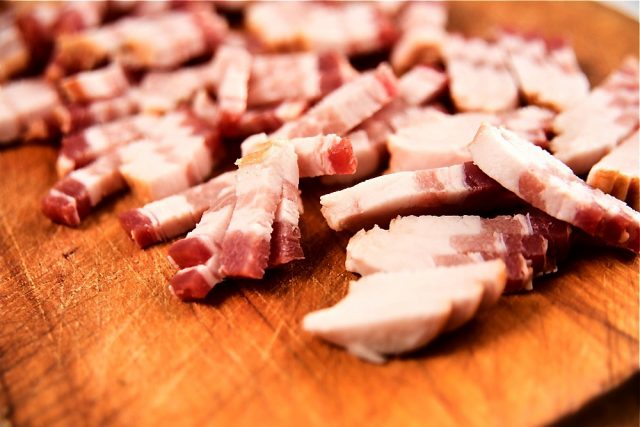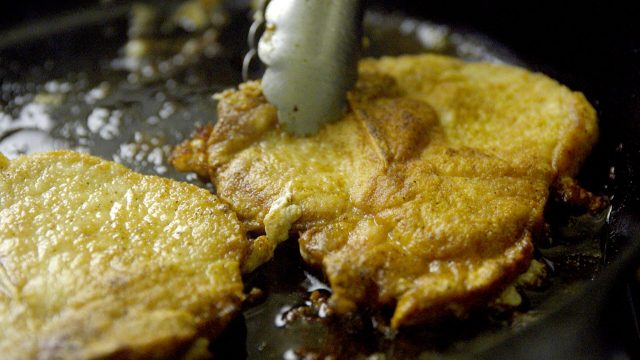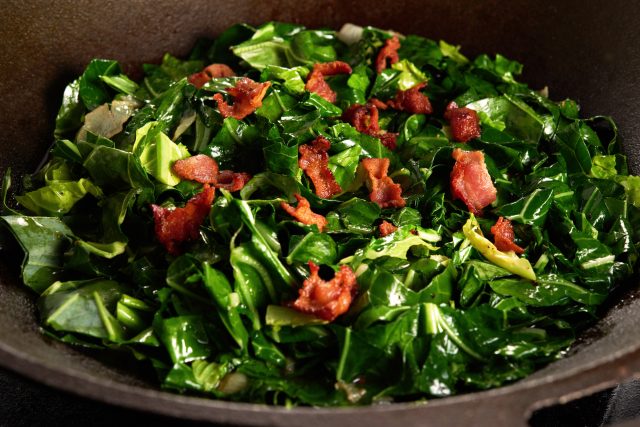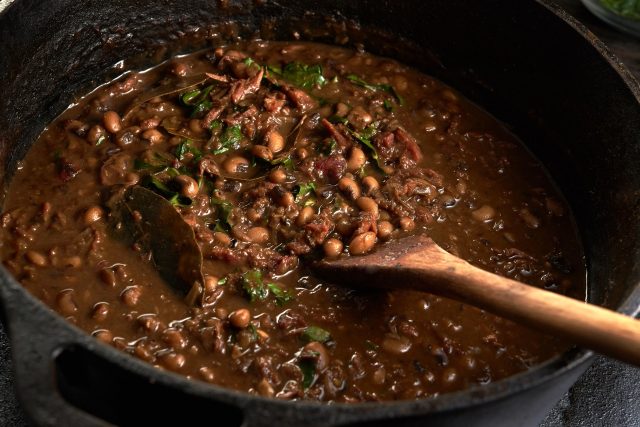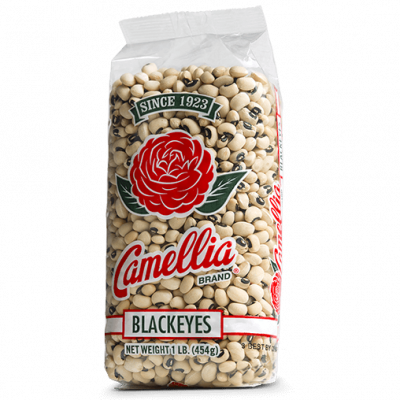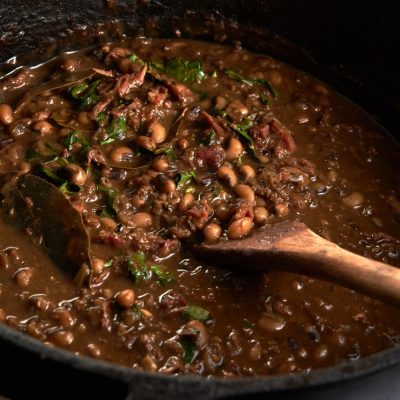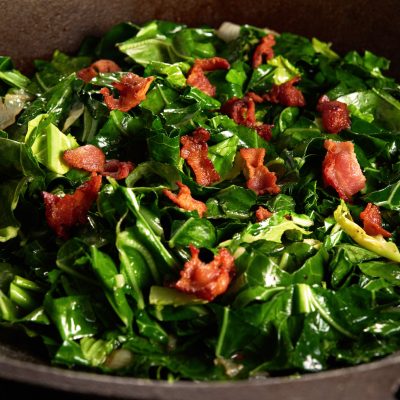Luck and Money: Pork for the New Year
Any Way You Slice It, Pork Adds a Beloved Flavor to Peas and Greens.
In the early 1540s Hernando de Soto and his men traversed the Gulf Coast and officially introduced fifteen hogs to the American South. At the time, the consumption of pork was a Christian duty for every Spanish-speaking Catholic. In fact, during the Spanish Inquisition, it became obligatory to have pork simmering in a cauldron or chorizo sausages hanging from the rafters as proof of the household’s faith.
Pork is considered lucky to eat on New Year’s Day in many cultures. The association was formed centuries ago in Europe when wild boars were caught and killed on the first day of the year – providing the family food for months to follow. Additionally, a pig uses its snout to dig in the ground in a forward direction – symbolizing positive momentum. Strengthening the association of plenty in America, on most farms the first cold snap signified that it was time for the annual hog slaughter. Neighbors gathered to pitch in at each house, and livers, cracklins, and chitterlings were enjoyed immediately. The hog fat was boiled and rendered into lard, and all scraps of meat were ground up for sausages. Sides of bacon, hog jowls, shoulders, and hams were cured in salt for weeks before they were hung in the smokehouse along with sausages, ham hocks, and knuckles. Every part of the hog was used, providing an abundance of pork in the larder for the following year.
Pork is an essential flavoring ingredient in blackeye peas and greens, adding a smoky, rich flavor that gives these tradional dishes their soul-satisfying staying power.
Easy Pan Fried Pork Chops
Braised Collard Greens Recipe
